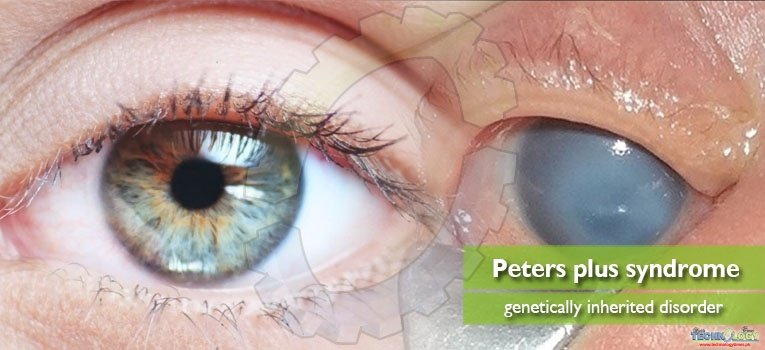Peters plus syndrome is genetically transmitted syndrome may be described as abnormalities of anterior eye chamber, cleft lip/palate, specific facial features, short stature and short limbed.

Peters plus syndrome develops blurred vision caused by lessening of cornea. Eye abnormalities, such as cataracts and glaucoma are ordinary in this syndrome. Major cause of peters plus syndrome is β1,3-galactosyltransferase-like gene (B3GLCT) gene mutations.
Causes of peters plus syndrome
Mutations are inherited by from either or both parents; nothing can be done before or during pregnancy to cause mutations. It was stated in a review that more inheritance was distinctively autosomal recessive, in more than 50 cases, in case of peters plus syndrome. Cleft lip was present in 45% and 83% showed mental delay. Gene B3GALTL encodes β1,3-glucosyltransferase which has major role in the production of Glc-β1,3-Fuc-O; a disaccharide present on thrombospondin type 1 repeats (TSRs) of proteins. TSRs plays a key role in development, including angiogenesis and neurogenesis.
Congenital disorder of Glycosylation
Establishment of immunopurification-mass spectrometry can analyze O-fucosyl glycans to compare properdin protein patients of peters plus syndrome and heterozygous family members. The disaccharide Glc-β1,3-Fuc-O was not detected in properdin from patients, whereas, it was detected in heterozygous relatives. These results supported peters plus syndrome leading to congenital disorder of glycosylation (CDG). Protein molecules can be modified by glycosylation. Rapid increase in number of CDG confirms the biological significance of this co/post-translational modification. Peters plus syndrome may be considered as presumed CDG because it is not definite that whether this mutation will produce a defective glycan or affect an unambiguous enzymatic activity. These evidences are the proof of defect in glycosylation due to mutations in the gene encoding β1,3-galactosyltransferase.
Infections related to Central Nervous System
In another study, patient expressed classical clinical phenotype of peters plus syndrome. He also showed recurring bacterial meningitis and absence seizures. In the condition of recurrent bacterial meningitis, patient showed major occurrence of CNS infections. Functional modifications of properdin, found in patients with B3GALTL mutations, may have caused suppressed immuno-depression in patients.
Discussion
In conclusion, Glc-β1,3-Fuc-O disaccharide was not found in properdin from patients with syndrome. Properdin is a protein can be produced in T-cells, monocytes and neutrophils, proposing that a major change in the activity of β1,3-galactosyltransferase may occur due to splice site mutation. Patients with peters plus syndrome were reported with unusual verdicts such as recurrent bacterial meningitis and absence seizures. Genitourinary tract and central nervous system (CNS) anomalies are also commonly reported.Further studies on patients having syndrome are required to verify the results and to broaden the phenotype of syndrome.